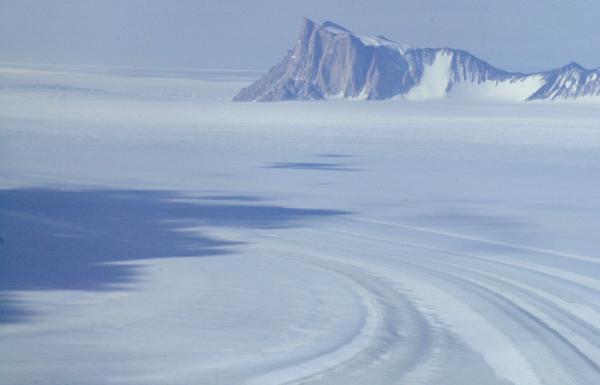98 of antarctica is covered by an ice sheet and underneath the ice the terrain is rocky and mountainous

98% of Antarctica is covered by an ice sheet, and underneath the ice the terrain is rocky and mountainous.

Antarctica, the southernmost continent, is home to some of the most breathtaking and unexplored landscapes on Earth. This vast icy wilderness is dominated by an immense ice sheet that covers a staggering 98% of the landmass. To truly understand the fascinating geography of Antarctica, we must delve beneath the icy surface and discover the rocky and mountainous terrain that lies hidden beneath.
Underneath the Ice Sheet: A Rocky and Mountainous World
Contrary to popular belief, Antarctica is not just a frozen desert of ice and snow. It boasts a diverse and captivating geological landscape that is largely hidden from view. The continent is blessed with a wide range of geological formations, including mountains, valleys, and plateaus, all concealed beneath the colossal ice sheet.
Antarctica’s rugged terrain is a reflection of its complex geological history. It is believed that the bedrock of the continent dates back millions of years, formed by the amalgamation of various ancient landmasses. Over time, tectonic activity and glacial erosion have shaped this rocky landscape into the awe-inspiring sight it is today.
The Majesty of Antarctica’s Mountains

Antarctica is home to numerous mountain ranges, some of which are buried deep beneath the ice sheet. These subglacial mountains add to the remarkable beauty and complexity of the continent’s geology. With peaks reaching heights of several thousand meters, these hidden giants offer a glimpse into the geological processes that have shaped Antarctica over millennia.
These subglacial mountains play a crucial role in supporting the massive ice sheet above them. They act like pillars, supporting the weight of the ice and preventing it from flowing into the surrounding ocean. Understanding the topography and structure of these mountains is vital in predicting the behavior of Antarctica’s ice sheet, which in turn has implications for global sea level rise.
The Intersection of Ice and Rock
The dynamic interaction between the ice sheet and the rocky terrain beneath it presents a unique scientific opportunity. Scientists have been able to access this hidden world by drilling deep into the ice and extracting cores of ancient ice and rock samples. These cores provide invaluable insights into the continent’s geological history, climate patterns, and even signs of ancient life.
Studying the rocky terrain underneath Antarctica’s ice sheet is not only crucial for understanding the continent’s past but also for predicting its future. Scientists are actively researching the impact of climate change on the stability of the ice sheet and the potential consequences for global sea levels. By unraveling the mysteries hidden beneath the ice, we gain a better understanding of Earth’s past, present, and future.
Conclusion
Antarctica, with its 98% ice-covered surface, is a mesmerizing realm of hidden wonders. The rocky and mountainous terrain beneath the ice sheet creates a unique and captivating geological landscape. Through exploration and scientific research, we continue to uncover the secrets held within this icy continent. The fascinating geology of Antarctica not only offers a glimpse into Earth’s history but also provides valuable insights into our planet’s future. Exploring this frozen wilderness is an ongoing journey, perpetually unveiling new discoveries and driving our understanding of the world we inhabit.
Source: Wikipedia - Geography of Antarctica
Tags
Share
Related Posts
Quick Links
Legal Stuff

